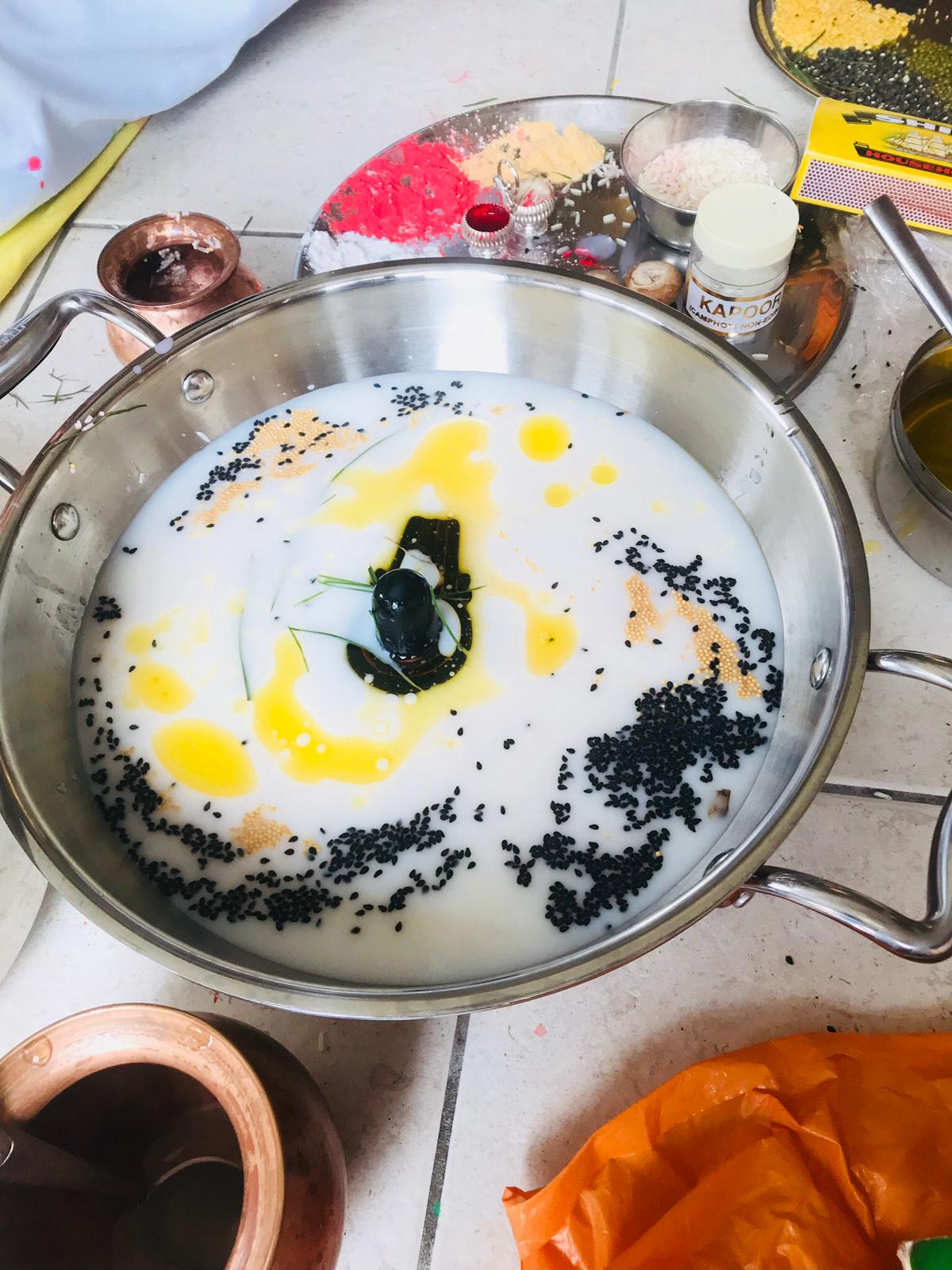Rudrabhishek (Shankar Bhagwan Puja)
Rudrabhishek (Shankar Bhagwan Puja)

Rudra is a famous name of Lord Shiva. In Rudrabhishek, Shiva lingam is worshiped and worshiped by taking a holy bath. It is one of the most powerful forms of worship in Hinduism and is believed to bless devotees with prosperity and peace and destroy the sins of many births. Shiva is considered to be an extremely benevolent God and is easily pleased.
Aim of Rudrabhishek
Rudrabhishek is performed in the month of Shivaratri. However, any day of Shravan (July-August) is ideally suited for Rudrabhisheka. The essence of this puja is the chanting of the sacred mantra of Sri Rudram from the Yajurveda and giving a holy bath to the Shivalinga with many materials including panchamrita or fruit honey etc. Here we are giving detailed Rudrabhishek Puja procedure for you.
Some scriptures say that Rudrabhishek is done only once in a person's life time. When a person wants the underground benefit of spiritual progress or relief from problems and difficulties, Rudrabhisheka can be done. It is believed that Rudra Abhishek protects those suffering from Saturn suffering in the horoscope. The process is very elaborate and needs to be carefully organized. However, knowledge of the scriptures is not so important as Lord Shiva easily forgives the shortcomings and only sees his good intentions and devotion behind the worship performed by the person. Rudrabhisheka provides peace, happiness, wealth and success in the family.
Preparation of Rudrabhishek
Detailed preparation is required before the beginning of Rudrabhishek. Asanas or seats are prepared for Lord Shiva, Mata Parvati, other deities and navagrahas. Before starting the puja, blessings are sought after worshiping Lord Ganesha. Devotees take a pledge or refer to worship. This puja includes various deities and deities of universal energy such as Mother Earth, Ganga Mata, Ganesha, Lord Surya, Goddess Lakshmi, Lord Agni, Lord Brahma and the nine planets. The Shivalinga is worshiped after worshiping all these deities and offering offerings, it is placed on the altar with an arrangement to collect the water flowing from the Shivalinga during the consecration.
Materials required for Rudrabhishek Puja
Lamp, oil or ghee, flowers, sandalwood paste, vermilion, incense, camphor, special dishes, kheer, fruits, betel leaves and nuts, coconut and others, besides the sacred ash, fresh milk in the ingredients gathered for the consecration , Yogurt, honey, rose water, panchamrit (fruit mixed with honey), sugarcane juice, tender coconut water, sandalwood water, gangajal and other aromatic substances that you want to offer.
Rudrabhishek Puja Process
A detailed version of Rudra Abhishek is performed after offering sacrificial objects to the Homa or fire. It is performed by Siddha priests. In this, the Shivling is kept in the north direction. Devotees sit near the Shivling facing east. Abhishek begins with Ganga Jal and after bathing the Shiva lingam in the midst of every kind of consecration with Ganga water, all the material required for Abhishek is offered to the Shivalinga. Finally, special dishes are offered to the Lord and Aarti is performed. The Ganges water collected from the consecration is sprinkled on the devotees and also given for drinking, which is believed to remove all sins and diseases. Rudram or 'Om Namah: Shivaay' is chanted throughout the entire process of Rudrabhishek.